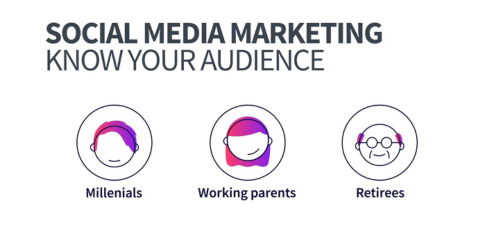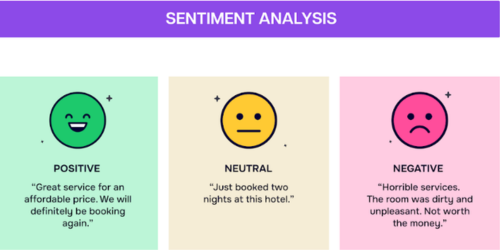
In today’s digital age, social media has become a vital channel for brands to connect with their audience. Online opinions and sentiments can significantly influence brand perception and market positioning. Social media sentiment analysis is a powerful tool that allows businesses to gauge public opinion and make informed decisions. This guide delves into the intricacies of sentiment analysis, offering insights into its importance, benefits, challenges, and advanced strategies.
Understanding Social Media Sentiment Analysis
Social media sentiment analysis is more than just a buzzword; it’s a vital tool that allows businesses to track and interpret the emotions and opinions of their audience on various social media platforms. By understanding how users feel about a brand, product, or service, businesses can make data-driven decisions that enhance their marketing strategies, improve customer service, and ultimately, drive growth.
The importance of social media sentiment analysis cannot be overstated. With millions of users expressing their opinions online, businesses are no longer in control of the narrative. Instead, they must actively listen to their audience and respond accordingly. Sentiment analysis provides the insights needed to navigate this complex landscape, offering a clear view of public opinion and helping brands stay ahead of potential issues.
What is Social Media Sentiment Analysis?
Social media sentiment analysis involves the process of identifying and categorizing opinions expressed in a piece of text, particularly on social media platforms. By leveraging natural language processing (NLP) and machine learning, sentiment analysis tools can determine whether the sentiment behind a piece of content is positive, negative, or neutral.
The importance of sentiment analysis lies in its ability to provide businesses with a deeper understanding of their audience’s feelings and opinions. It enables companies to track brand perception in real time, allowing them to make data-driven decisions to enhance their marketing strategies, customer service, and overall brand experience.
Types of Sentiments in Social Media
When analyzing sentiments on social media, there are three primary categories:
- Positive Sentiment: This indicates favourable opinions or praise towards a brand, product, or service. Positive sentiments can be identified through words of appreciation, satisfaction, or recommendations.
- Negative Sentiment: Negative sentiments reflect dissatisfaction, criticism, or complaints. These are crucial for identifying potential issues that could harm the brand’s reputation.
- Neutral Sentiment: Neutral sentiments neither express praise nor criticism. They often contain factual information, inquiries, or general statements without strong emotional undertones.
The role of NLP and machine learning in sentiment extraction is crucial. These technologies enable the analysis of vast amounts of unstructured data from social media platforms, providing insights that would be impossible to gather manually. By understanding the context and nuances in language, such as sarcasm or irony, these tools can offer a more accurate sentiment analysis.
Why Social Media Sentiment Analysis Matters
In a world where brand reputation can change in an instant, understanding social media sentiment is crucial for businesses of all sizes. Whether you’re a multinational corporation or a small local business, the sentiments expressed by your audience on social media can have a profound impact on your brand’s success.
Social media sentiment analysis matters because it provides a real-time pulse on how your audience feels about your brand. This information is invaluable for several reasons:
- Proactive Issue Management: By identifying negative sentiments early, businesses can address potential issues before they escalate into full-blown crises. This proactive approach can prevent damage to the brand’s reputation and maintain customer trust.
- Enhanced Customer Engagement: Understanding the emotions behind social media posts allows businesses to engage with their audience more effectively. Whether it’s responding to positive feedback or addressing concerns, sentiment analysis helps brands connect with their customers on a deeper level.
- Data-Driven Decision Making: The insights gained from sentiment analysis are not just about understanding how your audience feels—they’re about taking action. By analyzing trends and patterns in sentiment data, businesses can make informed decisions that drive success.
Overall, social media sentiment analysis is a powerful tool that helps businesses stay connected with their audience, respond to emerging trends, and maintain a positive brand image.
Key Benefits of Social Media Sentiment Analysis

Understand Your Audience: Sentiment analysis provides businesses with a window into their audience’s thoughts and feelings. By understanding the emotions behind social media posts, brands can tailor their messaging to better resonate with their audience.

Gather Actionable Data: The data collected through sentiment analysis is actionable, enabling brands to refine their strategies, enhance their products, and improve customer satisfaction.

Improve Brand Messaging: By understanding how different segments of the audience feel about a brand, businesses can craft more targeted and effective marketing campaigns.

Prevent Social Media Crises: By monitoring negative sentiments, companies can identify potential crises early and take proactive measures to mitigate any damage to their brand.
Challenges of Sentiment Analysis
While sentiment analysis offers numerous benefits, it also comes with its challenges:
- Dealing with Irony, Sarcasm, and Negations: One of the biggest challenges in sentiment analysis is accurately interpreting sarcasm, irony, and negations. For instance, a statement like “Just what I needed, another broken phone” is negative, but a basic sentiment analysis tool might misinterpret it as positive due to the phrase “just what I needed.”
- Managing Multipolarity in Sentiments: A single social media post can express multiple sentiments, making it challenging to categorize the overall sentiment. For example, a user might express dissatisfaction with a product but praise the customer service. Managing such multipolarity requires sophisticated tools that can accurately dissect and interpret mixed emotions.
How to Conduct Effective Sentiment Analysis
Conducting effective sentiment analysis involves more than just tracking mentions or analyzing keywords. It’s about understanding the full context of conversations and extracting actionable insights that can inform your marketing strategy.
Here’s a step-by-step guide to conducting sentiment analysis that yields meaningful results:
Step 1: Monitor Social Media Mentions

The first step in conducting effective sentiment analysis is to monitor social media mentions. Staying in the loop with brand conversations allows companies to keep track of how they are perceived by the public. By regularly monitoring mentions, businesses can respond quickly to any potential issues and engage with their audience in real time.
Step 2: Choose Relevant Keywords and Hashtags

Selecting the right keywords and hashtags is essential for accurate sentiment analysis. The choice of terms should be relevant to the brand, industry, and current trends. By carefully selecting these terms, companies can ensure that they capture the most pertinent conversations and sentiments related to their brand.
Step 3: Utilize the Right Sentiment Analysis Tools

There are several tools available that can help businesses conduct sentiment analysis effectively. Tools like Rival IQ, Brandwatch, and Talkwalker offer advanced features for monitoring and analyzing social media sentiments.
- Real-time Monitoring: Real-time monitoring is a critical feature in sentiment analysis tools. It allows businesses to stay updated on the latest conversations and sentiments as they happen. This is particularly important in crisis management, where timely responses can prevent potential PR disasters.
- Visual Data Representation: Visual representation of data, such as graphs and charts, can make it easier to interpret sentiment analysis results. Tools that offer visual data representation can help businesses quickly grasp trends and insights, making it easier to communicate findings to stakeholders.
Step 4: Apply Sentiment Insights to Your Strategy

Once the data is collected and analyzed, the next step is to apply these insights to your strategy. Sentiment analysis can help refine brand messaging, engage with customers more effectively, and monitor overall brand health. By integrating sentiment insights into your marketing strategy, you can enhance customer experience and drive better business outcomes.
Advanced Strategies for Social Media Sentiment Analysis
For businesses that have mastered the basics of sentiment analysis, it’s time to explore advanced strategies that can take your insights to the next level. Advanced sentiment analysis goes beyond just tracking positive, negative, or neutral sentiments—it involves understanding the underlying emotions, context, and trends that drive public opinion.
Some advanced strategies include:
Real-World Applications of Sentiment Analysis
Sentiment analysis is not just a theoretical concept; it has real-world applications that have significantly impacted businesses. Here are some case studies:
- Ferrara Candy: The company used sentiment analysis to monitor social media conversations during the Halloween season. By identifying positive sentiments around specific candies, Ferrara Candy was able to tailor its marketing campaigns, leading to increased sales.
- Starbucks: Starbucks leverages sentiment analysis to gauge customer feedback on new products. This allows the company to refine its offerings based on customer preferences and feedback.
- KFC: KFC used sentiment analysis to manage a PR crisis when they ran out of chicken in the UK. By monitoring negative sentiments in real time, KFC was able to address customer concerns quickly and prevent long-term damage to its brand.
Competitive Analysis through Sentiment Insights
Sentiment analysis can also be used for competitive analysis. By monitoring the sentiments expressed towards competitors, businesses can identify areas where they can outperform them. For example, if a competitor is receiving negative feedback on customer service, a brand can capitalize on this by emphasizing its superior service in marketing campaigns.
Improving Product and Customer Experience
Sentiment analysis provides valuable insights into customer opinions about products and services. By analyzing these sentiments, businesses can identify areas for improvement and make necessary adjustments to enhance the customer experience.
Tools and Tips for Accurate Sentiment Analysis
Accurate sentiment analysis requires the right tools and techniques. While there are many sentiment analysis tools available, not all of them are created equal. It’s important to choose tools that offer the features you need to conduct a thorough analysis, such as real-time monitoring, advanced analytics, and visual data representation.
Top Tools for Sentiment Analysis
Several tools are available that can help businesses conduct accurate sentiment analysis:
- Rival IQ: Offers social media analytics and competitive benchmarking.
- Quid: Provides deep analysis of large datasets to uncover hidden insights.
- Mention: Monitors brand mentions across various platforms and provides sentiment analysis.
- Brandwatch: Offers advanced social listening and sentiment analysis features.
- Sprinklr: Provides a comprehensive suite of tools for social media management and sentiment analysis.
Tips to Improve Sentiment Accuracy
- Human Judgment: While sentiment analysis tools are powerful, they are not infallible. Human judgment is often needed to interpret nuanced sentiments, such as sarcasm or mixed emotions.
- Context Consideration: Understanding the context in which a sentiment is expressed is crucial for accurate analysis. For example, a comment that might seem negative in isolation could be positive when considered in context.
- Regular Monitoring: Sentiment analysis should be an ongoing process. Regular monitoring ensures that businesses stay updated on the latest trends and can respond to changes in sentiment promptly.
How to Report Social Sentiment Effectively
Once you’ve conducted sentiment analysis, the next step is to report your findings effectively. Reporting is crucial because it allows you to communicate the insights you’ve gained to stakeholders, helping them make informed decisions based on the data.
Effective reporting involves more than just presenting raw data. It’s about telling a story that highlights the key trends, insights, and implications of your analysis. Here are some tips for reporting social sentiment effectively:
Presenting Data with Visuals
When reporting on social sentiment, it’s important to present data in a visually appealing way. Graphs, charts, and dashboards can make complex data more accessible and easier to understand for stakeholders. Visuals also help to highlight key trends and insights, making it easier to convey the impact of sentiment analysis.
Regular Updates to Track Sentiment Trends
Sentiment trends can change rapidly, so it’s important to provide regular updates to stakeholders. Frequent reporting ensures that decision-makers are always informed about the latest sentiment trends, allowing them to make timely and informed decisions.
Future of Social Media Sentiment Analysis
As technology continues to evolve, so too does the field of social media sentiment analysis. Emerging trends and technologies are shaping the future of sentiment analysis, offering new opportunities and challenges for businesses.
Some of the key trends to watch include:
Emerging Trends and Technologies
The future of social media sentiment analysis is likely to be shaped by emerging trends and technologies. AI-driven sentiment analysis, for example, is becoming increasingly sophisticated, offering more accurate and nuanced insights. Additionally, sentiment analysis is likely to become more integrated with other digital marketing tools, providing a more comprehensive view of brand health.
Ethical Considerations in Sentiment Analysis
As sentiment analysis technology advances, it is important to consider the ethical implications. Issues such as data privacy, algorithmic biases, and the responsible use of AI must be addressed to ensure that sentiment analysis is conducted ethically.
Conclusion: The Essential Role of Sentiment Analysis in Modern Marketing
Social media sentiment analysis plays an essential role in modern marketing. By providing businesses with a deeper understanding of their audience’s feelings and opinions, sentiment analysis enables brands to refine their strategies, improve customer experience, and prevent potential crises. However, it also comes with its challenges, such as dealing with sarcasm and multipolarity in sentiments. As the technology continues to evolve, businesses that leverage sentiment analysis effectively will have a competitive edge in the market.
For businesses looking to implement sentiment analysis, partnering with a social media marketing company in Jaipur can provide the expertise and tools needed to succeed in this ever-changing landscape.
